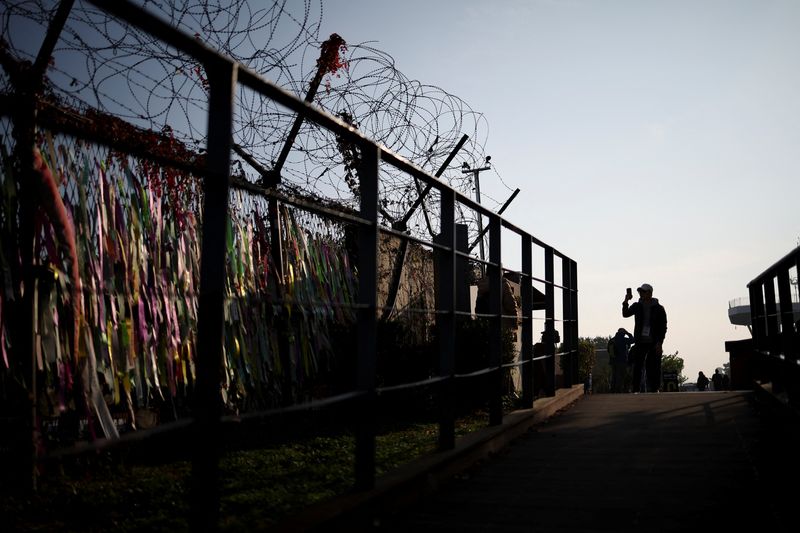By Jack Kim
SEOUL (Reuters) – North Korea fired a long-range ballistic missile into the sea off its east coast on Thursday, South Korea and Japan said, a day after Seoul reported the North was making preparations to test-launch an intercontinental ballistic missile.
The launch, at a sharply raised angle, was from an area near the North’s capital, Pyongyang, at 7:10 a.m. (2210 GMT), the Joint Chiefs said in a statement. The Japanese government later said the missile dropped into the sea at 8:37 a.m. (2337 GMT).
“It is believed the North Korea ballistic missile is a long-range ballistic missile fired at a high angle,” the Joint Chiefs of Staff said in a statement.
Earlier, the Japanese government said the missile was expected to land about 300 km (190 miles) west of its Okushiri Island off its northern Hokkaido region, outside its exclusive economic zone and towards the Russian coast.
Japanese Prime Minister Shigeru Ishiba later said there had been no reported damage from the launch.
Defence Minister Gen Nakatani said Japan strongly condemns the North’s action, which threatened not only Japan but also the international community. He said the flight time was likely the longest of North Korean missile launches and could be a new type of missile.
On Wednesday, South Korea’s Defence Intelligence Command said the North had placed a mobile launcher at a location making preparations to launch what could be an ICBM around the time of the U.S. presidential election, which takes place on Tuesday.
North Korea has conducted a series of ICBM test launches at a sharply steep trajectory to let the projectiles drop within much shorter distances relative to the designed range, partly for safety and to avoid the political fallout of sending a missile far into the Pacific.
But a launch with a flatter, standard trajectory is considered essential for ICBM development to ensure the warhead is capable of making a re-entry into the atmosphere while maintaining control to hit an intended target.
The North last test launched an ICBM in December last year, a projectile fuelled by solid-propellant and fired from a road launcher. That launch was also at a sharply raised angle and gave a flight time that could translate to a potential range of 15,000 km (9,300 miles) on a normal trajectory.
That is a distance that puts anywhere in the mainland United States within range.
NORTH KOREA ALIGNS WITH RUSSIA
North Korea has come under international condemnation after South Korea and the United States said Pyongyang had dispatched 11,000 troops to Russia for deployment in the war in Ukraine, with 3,000 of them already moved close to the frontlines.
U.S. Secretary of Defense Lloyd Austin and his South Korean counterpart Kim Yong-hyun condemned the deployment at a meeting in Washington on Wednesday.
North Korea’s move to make its troops co-belligerents fighting alongside the Russians has the potential to lengthen the already 2-1/2 year Ukraine conflict and draw in others, Austin said.
North Korea has already been supplying arms to Russia including missiles, artillery and anti-tank rockets in more than 13,000 containers since August last year, according to the South’s intelligence agency. Ukraine authorities have also said some of missiles fired by Russia were from the North.
At a summit in June in Pyongyang, Russian President Vladimir Putin and North Korea leader Kim Jong Un signed a comprehensive partnership treaty that included a mutual defence pact.

Neither Moscow nor Pyongyang directly acknowledged the supply of weapons from North Korea or the deployment of North Korean troops to the Ukraine war. Putin has said how Russia implements its partnership with North Korea is its own business.
North Korean Foreign Minister Choe Son Hui will hold strategic consultations in Moscow with her Russian counterpart Sergei Lavrov, Russia said on Wednesday.